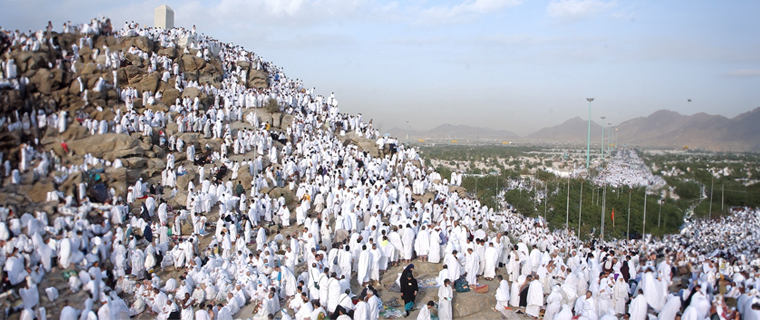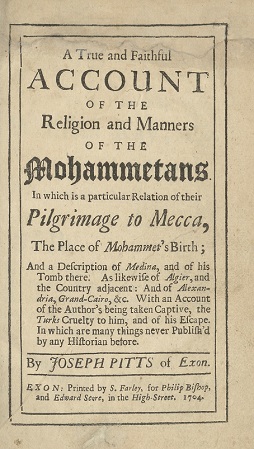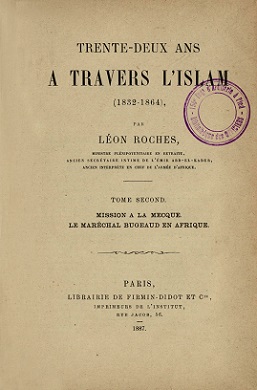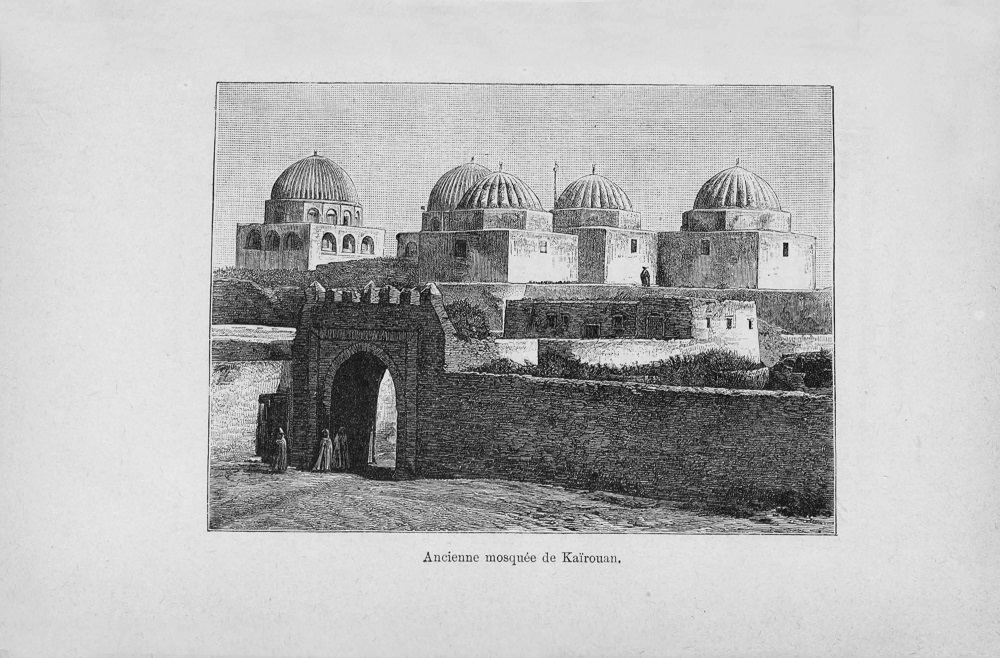
In just a few days, millions of pilgrims will stand on Mount Arafat in a magnificent scene that captivates hearts and the lenses of photographers, media outlets, and news agencies from all over the world. The next day, images of the massive crowds of Muslims in ihram clothing on the plains of Arafat will dominate the front page of major newspapers worldwide.
However, this was not the case in the 17th and 19th centuries when European non-Muslims had very limited access to the scene of pilgrims in Arafat. While Mecca and Medina held great importance in the Islamic world, descriptions of these cities by Europeans during the Middle Ages were scarce. According to Islamic rules, non-Muslims were – and still are – prohibited from entering Mecca, thus restricting their firsthand experience of the hajj rituals.
 Joseph Pitts is believed to be the first Englishman in modern history to visit the holy city of Mecca, in 1091 AH (1680 CE). He is known for being the first to describe the western pilgrimage route, and his journey is one of the earliest accounts of a European traveling to Arab lands. His book – A True and Faithful Account of the Religion and Manners of the Mohammetans – depicts the most important city in the Islamic world, its inhabitants, their customs and hajj traditions during a period rarely documented by books. His book became one of the crucial references for subsequent European explorers and adventurers who sought to venture into the mysteries of the Arabian desert.
Joseph Pitts is believed to be the first Englishman in modern history to visit the holy city of Mecca, in 1091 AH (1680 CE). He is known for being the first to describe the western pilgrimage route, and his journey is one of the earliest accounts of a European traveling to Arab lands. His book – A True and Faithful Account of the Religion and Manners of the Mohammetans – depicts the most important city in the Islamic world, its inhabitants, their customs and hajj traditions during a period rarely documented by books. His book became one of the crucial references for subsequent European explorers and adventurers who sought to venture into the mysteries of the Arabian desert.
Little did Pitts, the young British sailor on a British ship, imagine that one day he would become a captive of an Algerian sailor, who gave him the name "Yusuf". Pitts was subsequently sold to another master and in 1680, Joseph embarked on a journey to Mecca with him, travelling from Algeria to Alexandria by sea, then sailing along the Nile to Cairo, and from there traveling overland to Suez. They then set sail from Suez on a month-long voyage to the port of Rabigh before proceeding to Jeddah and finally reaching the holy city of Mecca.
Pitts was moved by the scene of pilgrims on the plains of Arafat, prompting him to describe it with admiration:
“It was a sight, indeed, able to pierce one’s heart, witnessing so many thousands in humbleness, with their naked heads and cheeks watered with tears, and to hear their grievous sighs and sobs, begging earnestly for forgiveness and promising a fresh start.” Pitts would then proceed to lament the numerous divisions among Christians in comparison to Muslims.
 Another European to experience hajj was Léon Roches, the son of a French soldier, who participated in the French campaign to occupy Algeria, and traveled to the Hijaz during the hajj season in 1841 on an intelligence mission. He was assigned by Marshal Thomas Bugeaud, the Governor-General of Algeria, with the task of visiting and convincing the Sharif of Mecca to approve and endorse a fatwa urging Algerian Muslims to cease the resistance movement led by Algerian religious and military leader Emir Abdelkader against occupation forces and to accept French control. In exchange, France would offer a commitment to respect Algerian religious and judicial institutions. Roches documented his journey to Mecca in a book titled Thirty-Two Years Through Islam (1832-1864). His book and the one by Pitts are available for reference in our Heritage Library.
Another European to experience hajj was Léon Roches, the son of a French soldier, who participated in the French campaign to occupy Algeria, and traveled to the Hijaz during the hajj season in 1841 on an intelligence mission. He was assigned by Marshal Thomas Bugeaud, the Governor-General of Algeria, with the task of visiting and convincing the Sharif of Mecca to approve and endorse a fatwa urging Algerian Muslims to cease the resistance movement led by Algerian religious and military leader Emir Abdelkader against occupation forces and to accept French control. In exchange, France would offer a commitment to respect Algerian religious and judicial institutions. Roches documented his journey to Mecca in a book titled Thirty-Two Years Through Islam (1832-1864). His book and the one by Pitts are available for reference in our Heritage Library.
Unlike the current hajj season, which is in summer, Roches’ pilgrimage coincided with winter. He describes the night he left for Arafat as follows:
"The night was cold and dark... I can’t find words to describe the magnificent scene of numerous camps illuminated by the glow of fires in front of the tents of rich and well-off Muslims. The light emanating from those fires allowed me to see thousands of latecomer pilgrim caravans."
Regarding the Day of Arafat, Roches writes:
"The ninth of Dhu al-Hijjah, 1257 AH, January 22, 1842, is a day I will never forget as long as I live. A cannon shot announced the beginning of the Fajr [dawn] prayer, and the voices of muezzins resonated from several camps, calling loudly for prayer."
Roches did not actually convert to Islam; he pretended to do so to spy on Emir Abdelkader, and he feared that his true identity would be exposed by Algerian pilgrims who knew him when he worked as a translator for the French forces there. This did actually happen, and he would have been killed were it not for the intervention of the Sharif of Mecca's forces.

Roches describes the scene of pilgrims in the final hours of the Day of Arafat with words filled with reverence and admiration, saying:
"The muezzin called for the Asr prayer, and the preacher began his sermon. I couldn't understand what he was saying, but I heard his supplications to Allah. With each supplication, he would raise his arms slowly towards the sky, and sixty thousand of the present pilgrims would follow suit, repeating harmoniously: 'Labbaik Allahumma Labbaik.' Can a similar scene be described? I won't attempt to do so because if I did, I would diminish its greatness and undermine its magnificence."
Continuing his moving description, he adds:
"The most devout pilgrims crowded together on the slopes of Mount Arafat during the sermon. Some wept, other beat their chests, and a few knelt down. The majority of them experienced a spiritual ecstasy."
Both Pitts and Roches offer unique perspectives on the scene of pilgrims in Arafat during the 17th and 19th centuries. Their firsthand accounts provide invaluable historical documentation and shed light on the experiences of non-Muslim Europeans who witnessed the rituals of Hajj and captured the essence of this significant religious event.
Despite 343 years having passed since Joseph Pitts saw the rituals of hajj and 181 years since Leon Roches’ journey to the Holy Land, their journeys remain significant historical records, despite neither of them being Muslims. They describe the most important cities of the Islamic world, in Algeria, Egypt, and Hijaz, during a historical period documented in only a few writings that depict the most important journey undertaken by any Muslim in their lifetime.
Qatar National Library is committed to digitizing historical documents and ancient printed books that cover history, geography, and culture in the Arab world, particularly the Gulf region. These materials are made accessible to interested individuals, researchers, and scholars worldwide through Qatar Digital Library and the Digital Repository. The Library spares no effort in providing knowledge resources to its visitors through its website, mobile application, electronic sources, research consultations and the Ask a Librarian service.

Add new comment